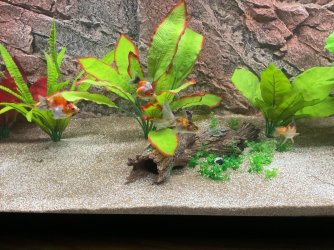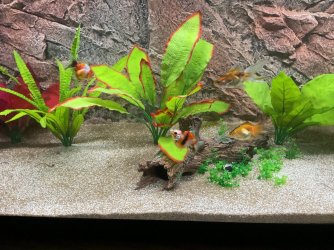The bacteria prefer ammonia. However, they also have receptors for ammonium. But they process ammonium less efficiently than ammonia. However, it is the ammonia which is highly toxic and the ammonium is way less so. this does not mean that Ammonium can not do harm. The higher the level, the less safe. Plus there is the rish that something might cause the pH to rise unexpectedly and in such cases it is very easy for ammonia to appear where there was only ammonium before.
However, if there were no nitrifying organisms in acid waters, there would not be many or any fish in them. A lot of the issues relating to cycling are due to the fact than nature is huge and tanks are very small in comparison. And then there is the fact that nature doesn't make mistakes but people can. Nature can hold surprises, a tornado, a high temperature spell, torrential rains etc. But in most cases these may spare fish while they wreck havoc with humans.
I gave up cycling tanks some time ago and choose instead to cycle filters. Like many here I have a number of tanks, So when I need to cycle multiple tanks I use a bio-farm and I cycle filters. But when I need to cycle just one tank I simply rinse out some of my cycled media in the new tank. I add ammonia and I am usually good to go fairly fast. If it is an urgent need I will move in some live plants as well. Plants also host the need bacteria, so, when we add them, we get a double benefit.
Scientists can culture their own bacteria in an environment free of any nasties. When I run my bio-farm It is in a newly set up tank with new water. There is no chance of contamination.
Next, the bottles bacteria from Dr. Hoavanec or tetra can remain viable in the bottle for a whole lot longer than 72 hours or 73 days for that matter. I keep a small bottle of Dr. Tim's bacteria in my fridge. At the cooler temp the product remains viable for about a year. By viable it is meant that they will perform as expected. Longer than that and there may no longer be enough number to accelerate a cycle by very much.
Another thing we often do not realize about the bacteria is we have an awful huhe number if individuals. Every day a number of them die and at the same time new ones are created because the living ones are also dividing. So the net result is a stable functional colony. What can change that is the amunt of ammonia being made available. If it declines then there will be more individuals dying than are being "born." Increase the amount of ammonia and the reverse will happen.
The bacteria must have survival strategies or they would have died out a very long time ago as they do not form spores. I can show you papers where soil stored for years still contained enough viable and cultural bacterial cells that they could provide the start of a huge colony when conditions favor this.
And since Dr, Hovanec et. al. made their discoveries, things have indeed changed. Nitrospira were discovered to be able process ammobia to nitrate as well as nitrite to nitrate. Also it was discovered that there are Archaea able to oxidize ammonia to nitrite. In fact, they can out compete bacteria when ammonia levels are very low. Many of us may have Archaea in our tanks as well as bacteria or instead of it.
The most important thing to realixe is that the challenge for us as fish keepers is to insure ammonia is not an issue. We may cycle a tank to do this. we may use plants to do this or even algae. Often it is a combination. The one thing that is certain is all tanks which handle ammonia contain some amount of bacteria. Even the most heavily planted tanks still have nitrifying bacteria at work in them. Itr may be a small amount, but it is never 0.
On the other hand, there are plenty of cycled tanks without a single live plant in them. They may or may not have some algae.
One last note. The bacteria in a bottle are healthy but basically "asleep." They go to sleep when they notice that the things they need are no longer available- ammonia, oxygen and inorganic carbon are the big 3. In the bottle these things are absent. When we put them into a tank with ammonia available as will as O and carbonates/CO2, they wake up and go back to work.





